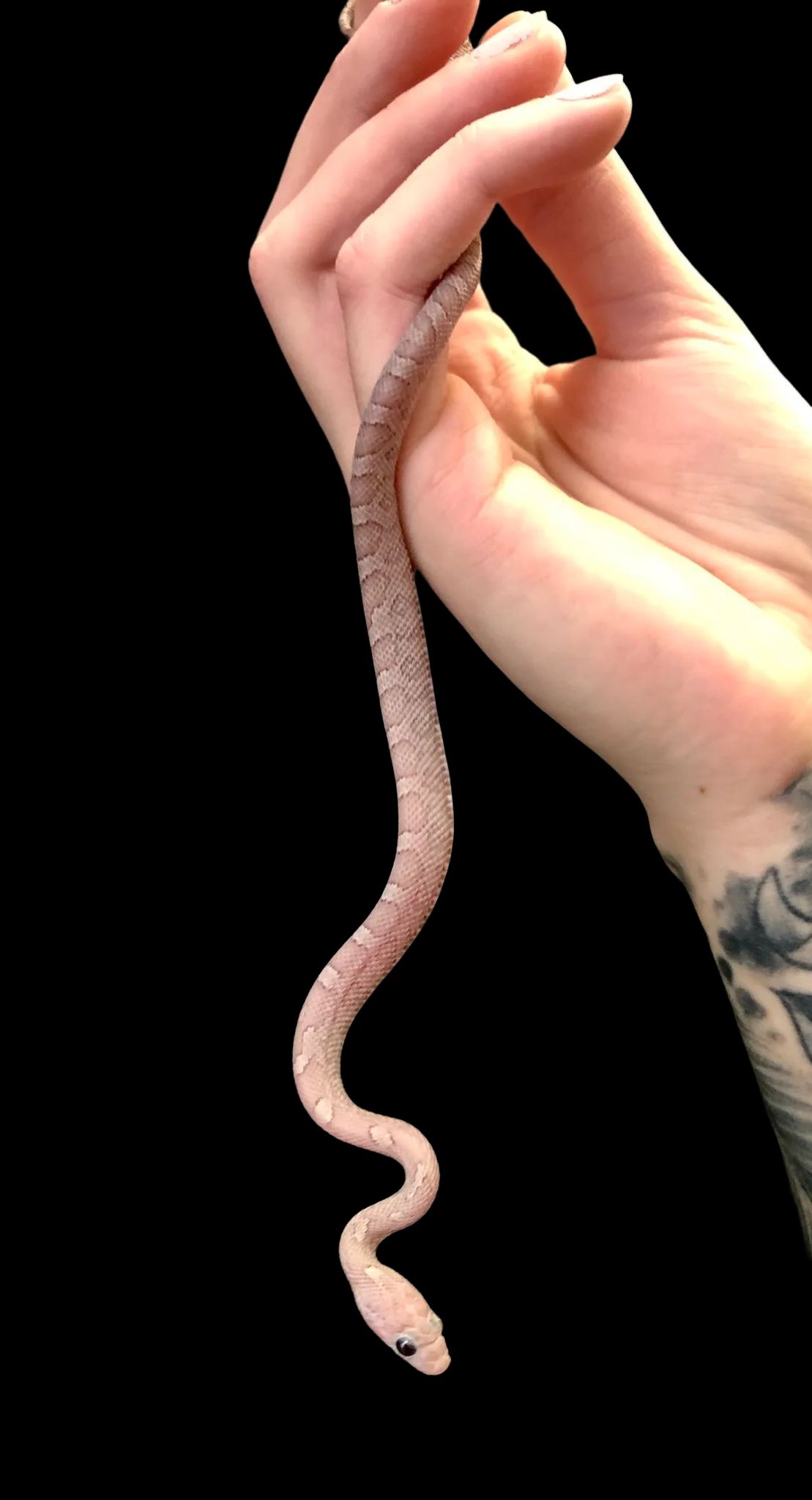Photo Disclaimer
Description
Corn Snake (Pewter)
Scientific Name: Pantherophis guttatus
Common Name: Corn Snake
Species Overview
Size: Adults typically reach 3–5 feet (0.9–1.5 m) in length, with a slender, muscular frame and smooth, glossy scales.
Appearance: The Pewter Corn Snake is a subdued, gray-toned morph produced by the combination of the Diffused (Bloodred) and Charcoal recessive traits. This Corn Snake displays a soft silver-gray or taupe base with faint, smoky saddles that often fade as it matures, leaving behind a nearly patternless body. The belly is smooth and pattern-free due to the Diffused gene, while the Charcoal gene removes red pigment, giving the snake its cold, metallic hue. The eyes are typically dark gray to black, complementing the overall desaturated coloration. The result is a morph with a clean, ghostly appearance that highlights the subtle beauty of minimal contrast and cool tones.
Distribution: A selectively bred morph of the Corn Snake (P. guttatus), developed through the combination of the Charcoal and Diffused (Bloodred) recessive genes.
Habitat: Wild Corn Snakes inhabit forests, farmlands, and grasslands throughout the southeastern United States. In captivity, they thrive in naturalistic terrariums with climbing opportunities, hiding areas, and soft substrate for burrowing.
Behaviour: Corn Snakes are crepuscular, most active during dawn and dusk. They are hardy, adaptable, and consistent feeders, making them a reliable species for both display and breeding programs.
Captive Care
Enclosure: A naturalistic 40-gallon terrarium (36” × 18” × 18”) or larger is ideal for adults. A soil-based or bioactive substrate layered with leaf litter encourages natural burrowing and exploration. Provide multiple hides, cork flats, climbing branches, and plant cover for enrichment and security.
Temperature & Humidity: Maintain a daytime gradient of 75–82°F (24–28°C) with a basking area around 86–88°F (30–31°C). Allow nighttime drops to 70°F (21°C). Maintain humidity between 40–60%, with a humid hide provided during shedding.
Diet: Offer frozen-thawed rodents every 7–10 days for juveniles and every 10–14 days for adults. Prey should be roughly 1.25× the width of the snake’s mid-body.
Behaviour in Captivity: Corn Snakes are active and resilient in captivity, thriving under consistent care and environmental stability. They readily adapt to naturalistic setups and make dependable long-term captives.
Special Considerations: The Pewter Corn Snake is often used in breeding projects to produce muted and high-contrast combinations. When paired with genes such as Anery, Hypo, or Lavender, the resulting offspring can exhibit cooler silver or lilac-gray hues.
Genetics Note
Charcoal (Recessive)
Removes all red and yellow pigment, producing gray and black tones. The eyes are dark gray to black.
Diffused / Bloodred (Recessive)
Removes belly checkering and softens or eliminates dorsal patterning, creating smooth, even coloration.
Genetic Combination Summary
The Pewter Corn Snake expresses two recessive traits:
-
Charcoal = Removes red pigment, producing gray and silver coloration
-
Diffused (Bloodred) = Reduces dorsal and ventral patterning for a smooth, patternless look
Together, these traits produce a snake with uniform silver-gray coloration and a clean, minimalist aesthetic. The Pewter Corn Snake is an excellent foundation morph for cooler-toned breeding projects, including Pewter Ghost, Hypo Pewter, or Lavender Pewter combinations that emphasize depth and metallic hue.

